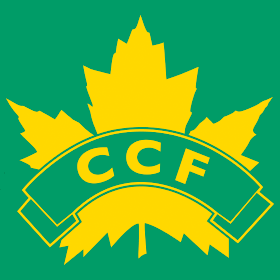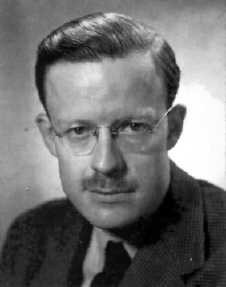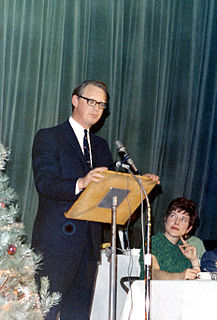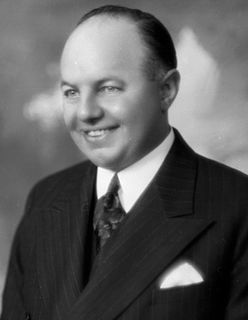| |||||||||||||||||||||||||||||||||||||||||
90 seats in the 21st Legislative Assembly of Ontario 46 seats were needed for a majority | |||||||||||||||||||||||||||||||||||||||||
| |||||||||||||||||||||||||||||||||||||||||
| |||||||||||||||||||||||||||||||||||||||||
The Ontario general election of 1943 was held on August 4, 1943, to elect the 90 Members of the 21st Legislative Assembly of Ontario (Members of Provincial Parliament, or "MPPs") of the Province of Ontario, Canada.

Ontario is one of the 13 provinces and territories of Canada and is located in east-central Canada. It is Canada's most populous province accounting for 38.3 percent of the country's population, and is the second-largest province in total area. Ontario is fourth-largest jurisdiction in total area when the territories of the Northwest Territories and Nunavut are included. It is home to the nation's capital city, Ottawa, and the nation's most populous city, Toronto, which is also Ontario's provincial capital.
The Ontario Progressive Conservative Party, led by George Drew, defeated the Ontario Liberal Party government. The Liberal government had disintegrated over the previous two years because of a conflict between Mitchell Hepburn, the Ontario caucus and the federal Liberal Party of Canada.

George Alexander Drew, was a Canadian conservative politician who founded a Progressive Conservative dynasty in Ontario that lasted 42 years. He served as the 14th Premier of Ontario from 1943 to 1948.
The Ontario Liberal Party is a provincial political party in the province of Ontario, Canada. The party is ideologically aligned with the Liberal Party of Canada but the two parties are organizationally independent and have separate, though overlapping, memberships.

Mitchell Frederick Hepburn was the 11th Premier of Ontario, Canada, from 1934 to 1942. He was the youngest Premier in Ontario history, appointed at age 37. His personality was complex, as The Globe and Mail noted in its obituary for him:
Hepburn resigned and was eventually succeeded by Harry Nixon in early 1943. The change in leadership was not enough to save the government. The election held later that year resulted in the Conservative Party, recently renamed the "Progressive Conservative Party", winning a minority government. This began forty-two uninterrupted years of government by the Tories who combined moderate progressive policies with pragmatism and caution.

Harry Corwin Nixon was a Canadian politician and briefly the 13th Premier of Ontario.
A minority government, or minority cabinet or minority parliament, is a cabinet formed in a parliamentary system when a political party or coalition of parties does not have a majority of overall seats in the parliament. It is sworn into office, with or without the formal support of other parties, to enable a government to be formed. Under such a government, legislation can only be passed with the support of enough other members of the legislature to provide a majority, encouraging multi-partisanship. In bicameral parliaments, the term relates to the situation in chamber whose confidence is considered most crucial to the continuance in office of the government.
The Liberals fell to third place behind a new force, the socialist Ontario Co-operative Commonwealth Federation (CCF), led by Ted Jolliffe, went from obscurity to form the Official Opposition, winning 32% of the vote and 34 seats in the legislature, just four short of Drew's Tories. The Liberals and their Liberal-Progressive allies fell from 66 seats to a mere 15.

The Co-operative Commonwealth Federation – The Farmer-Labor Party of Ontario, or more commonly known as the Ontario CCF, was a democratic socialist provincial political party in Ontario that existed from 1932 to 1961. It was the provincial wing of the federal Co-operative Commonwealth Federation (CCF). The party had no leader in the beginning, and was governed by a provincial council and executive. The party's first Member of the Legislative Assembly (MLA) was elected by voters in the 1934 Ontario general election. In the 1937 general election, no CCF members were elected to the Ontario Legislature. In 1942, the party elected Toronto lawyer Ted Jolliffe as its first leader. He led the party to within a few seats of forming the government in the 1943 general election; instead, it formed the Official Opposition. In that election, the first two women were elected to the Ontario Legislature as CCFers: Agnes Macphail and Rae Luckock. The 1945 election was a setback, as the party lost most of its seats in the Legislature, including Jolliffe's seat. The party again became the Official Opposition after the 1948 general election, and defeated the Conservative premier George Drew in his seat, when Bill Temple unexpectedly won in the High Park constituency. The middle and late 1940s were the peak years for the Ontario CCF. After that time, its electoral performances were dismal, as it was reduced to a rump of two seats in the 1951 election, three seats in the 1955 election, and five seats in the 1959 election. Jolliffe stepped down as leader in 1953, and was replaced by Donald C. MacDonald.

Edward Bigelow "Ted" Jolliffe was a Canadian social democratic politician and lawyer from Ontario. He was the first leader of the Ontario section of the Co-operative Commonwealth Federation (CCF) and leader of the Official Opposition in the Ontario Legislature during the 1940s and 1950s. He was a Rhodes Scholar in the mid-1930s, and came back to Canada to help the CCF, after his studies were complete and being called to the bar in England and Ontario. After politics, he practised labour law in Toronto and would eventually become a labour adjudicator. In retirement, he moved to British Columbia, where he died in 1998.
Liberal-Progressive was a label used by a number of candidates in Canadian elections between 1925 and 1953. In federal and Ontario politics, there was no Liberal-Progressive party: it was an alliance between two parties. In Manitoba, a party existed with this name.
Two members of the banned Communist Party of Ontario running as "Labour" candidates won seats in the Legislature for the first time in this election: A.A. MacLeod in the Toronto riding of Bellwoods, and J.B. Salsberg in the Toronto riding of St. Andrews. Several days following the election the Labor-Progressive Party was officially formed and Salsberg and MacLeod agreed to sit in the legislature as the party's representatives.

Toronto is the provincial capital of Ontario and the most populous city in Canada, with a population of 2,731,571 in 2016. Current to 2016, the Toronto census metropolitan area (CMA), of which the majority is within the Greater Toronto Area (GTA), held a population of 5,928,040, making it Canada's most populous CMA. Toronto is the anchor of an urban agglomeration, known as the Golden Horseshoe in Southern Ontario, located on the northwestern shore of Lake Ontario. A global city, Toronto is a centre of business, finance, arts, and culture, and is recognized as one of the most multicultural and cosmopolitan cities in the world.
The Labor-Progressive Party was a legal political organization in Canada between 1943 and 1959.









